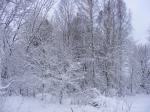Nordic Noir is tightly bound up with the imagery of snow and ice.[ii] But what if climate change results in a milder Nordic climate while rendering other areas across the globe  uninhabitable, as many scientists project? We might see the disastrous indirect effects of global warming on Nordic society and culture. This could wipe out the other salient feature of Nordic Noir—the ever present back-drop of the social welfare state. Antti Tuomainen’s novel, The Healer (2013 (2010)) attempts to imagine just this world.[iii]
uninhabitable, as many scientists project? We might see the disastrous indirect effects of global warming on Nordic society and culture. This could wipe out the other salient feature of Nordic Noir—the ever present back-drop of the social welfare state. Antti Tuomainen’s novel, The Healer (2013 (2010)) attempts to imagine just this world.[iii]
[What follows contains no significant spoilers]
Winner of the 2011 Clue award for best Finnish crime novel, The Healer takes place in Finland after climate change has caused environmental and social chaos. The Nordic  countries are some of the few habitable places left on earth.[iv] Mass migration chokes train stations; hospitals serve only the wealthy; illnesses like TB are common; the police force is a sham; jobs are scarce, as are food, electricity and clean water (though Finland is desirably water-rich, with lakes and good rainfall). Fans looking for “Nordic Noir” might be disappointed, since the story, characters, and scenery are necessarily defamiliarized. With fires, crime, and empty shopping malls, this could be any dying city, which is of course part of what’s frightening.
countries are some of the few habitable places left on earth.[iv] Mass migration chokes train stations; hospitals serve only the wealthy; illnesses like TB are common; the police force is a sham; jobs are scarce, as are food, electricity and clean water (though Finland is desirably water-rich, with lakes and good rainfall). Fans looking for “Nordic Noir” might be disappointed, since the story, characters, and scenery are necessarily defamiliarized. With fires, crime, and empty shopping malls, this could be any dying city, which is of course part of what’s frightening.
The Healer is a hybrid of crime fiction and science fiction set in the not too distant future. There is no new technology to suggest we are beyond the year 2050 or so. The effects of climate warming have thus occurred more suddenly than is generally predicted. This is not outlandish, since current estimates are dismayingly only our best case scenarios.[v] Climate change could occur suddenly. A recent NYTimes article and another out just yesterday in The Guardian discuss how our current climate warming “plateau” might well be  followed by a rapid increase in global temperatures by a full 4°C. Among the surest effects of even mild warming would be global sea level rise, which could affect all Nordic as well as US coastlines. This would displace millions of people around the world and could change weather patterns, making some places too wet or too dry.[vi] In The Healer, climate refugees crowd into southern Finland. They overtake abandoned homes, while private security firms police the neighborhoods. Throughout, one bitter truth remains: the world saw this coming, but failed to regulate consumption and carbon emissions. Against this backdrop the narrator, a poet, searches for his missing journalist wife.
followed by a rapid increase in global temperatures by a full 4°C. Among the surest effects of even mild warming would be global sea level rise, which could affect all Nordic as well as US coastlines. This would displace millions of people around the world and could change weather patterns, making some places too wet or too dry.[vi] In The Healer, climate refugees crowd into southern Finland. They overtake abandoned homes, while private security firms police the neighborhoods. Throughout, one bitter truth remains: the world saw this coming, but failed to regulate consumption and carbon emissions. Against this backdrop the narrator, a poet, searches for his missing journalist wife.
The Healer reads remarkably quickly and smoothly and packs its fair share of violence, as well as a surprising amount of romantic sentiment. Most readers of Nordic Noir will find it a decent page turner. On the other hand, the novel feels like several opportunities lost to me. I thought it disingenuous that a book about a poet features not one word of poetry (I am familiar only with the English translation). Further, its treatment of the issues surrounding global warming is underwhelming
There are several admittedly uncertain projections of what could happen to Finland in particular as a result of climate change.[vii] Some include periods of increased rainfall and flooding alternated with drought. Finland with its 200,000 lakes would become dangerously desirable. Tuomainen keeps in line with some predictions of heavy social conflict in the face of scarce resources, as we see in this brief summary at the start of the novel:
The southern regions of Spain and Italy had officially been left to their own devices. Bangladesh, sinking into the sea, had erupted in a plague that threatened to spread to the rest of Asia. The dispute between India and China over Himalayan water supplies was driving the two countries to war…
Ongoing wars or armed conflicts in the European Union: thirteen, mostly in border areas.
Estimated number of climate refugees planet-wide: 650—800 million people.
The narrator says the “coexistence” of hordes of refugees and less wealthy Finns unable to move north “wasn’t always peaceful”—surely an understatement. Climate refugees might well be refused (legal) entry. The region might be heavily militarized and overtaken by a superpower (there are already some indications of this[viii]). Rainfall could well be fierce and unpredictable, with storm surges, floods, hurricanes etc. The Healer emphasizes criminal rather than meteorological dangers inside habitable Finland.
For Tuomainen’s characters, thoughtless consumer society and industrial pollution are  to blame. Even if the reader agrees, at best the novel offers a mere place holder for a decent summary of the potential causes of global climatic collapse. There is no explanation as to why buying or selling green and similar environmentally directed strategies failed.[ix] The Healer may be just a thriller, but it could have done more here to educate readers.[x]
to blame. Even if the reader agrees, at best the novel offers a mere place holder for a decent summary of the potential causes of global climatic collapse. There is no explanation as to why buying or selling green and similar environmentally directed strategies failed.[ix] The Healer may be just a thriller, but it could have done more here to educate readers.[x]
Last, there could have been more science fiction in this science fiction. There is no mention of the massive geo-engineering projects being dreamt up all over the world right now.[xi] Imagine jets overhead at all hours spraying a protective veil of sulphur. Or a monolithic carbon-capture industrial complex, or a mid sea flood barrier about to collapse. A few easy allusions to imagined or cutting edge technology would have lent power and interest to this rather vanilla representation of global warming.
Ultimately, The Healer will satisfy readers looking for a short, seamless page-turner with a warm heart. The door has been opened, or perhaps left open, for other authors interested in tackling global warming within the Nordic Noir genre.
[i] “…3.5°C means a different kind of world…It would be, eventually, a world without ice.” Clive Hamilton, Earthmasters (Yale, 2013) p. 7.
[ii] See for instance Barry Forshaw’s aptly titled Death in a Cold Climate, which I reviewed here.
[iii] Antti Tuomainen, The Healer, (Henry Holt, New York 2013 (2010)), tr. Lola Rogers.
[iv] The Arctic, which includes the northern portion of Finland, has been predicted to turn warmer and desirably wet amid global drought and other ills. See for instance James Lovelock: “We are in a fool’s climate, accidentally kept cool by smoke, and before this century is over billions of us will die and the few breeding pairs of people that survive will be in the Arctic where the climate remains tolerable.” http://en.wikipedia.org/wiki/James_Lovelock – see the section on “Climate.” Lovelock has since scaled back his claims, but many regard his earlier projections as valid nonetheless. See http://theconversation.com/james-lovelocks-climate-change-u-turn-6668
[v] David Archer, The Long Thaw. Princeton UP 2009, p. 68.
[vi] Scientists have predicted this for some time: http://www.independent.co.uk/voices/commentators/james-lovelock-the-earth-is-about-to-catch-a-morbid-fever-that-may-last-as-long-as-100000-years-523161.html
[viii] Hamilton, Clive. Earthmasters: The Dawn of the Age of Climate Engineering. Yale UP, 2013, p. 81. He writes, “in a provocative move in 2007 a Russian submarine planted its national flag on the seabed under the North Pole. Other Arctic states—notably Canada, USA and Norway—have invested in new Arctic military capability. Norway has shifted its army headquarters from Oslo to the northern town of Bardufoss, with a new fleet of jets to be based there. In 2008 Russian President Dmitry Medvedev declared: ‘Our first and main task is to turn the Arctic into Russia’s resource base of the 21st century.’”
[ix] Disclosure: I am currently working on a book about the origins of “buying and selling green,” so I am perhaps more than commonly sensitive to this issue. Second, many think Nordic Noir attains a special value for its ability to add nuance to a reader’s understanding of social and political systems. See for instance: http://www.guardian.co.uk/commentisfree/2011/feb/24/can-scandinavian-crime-fiction-teach-socialism
[x] Showing consumers the direct environmental effects of their purchases can have a major impact on, for instance, a corporation’s treatment of natural resources. See for instance, http://www.npr.org/blogs/parallels/2013/05/31/187301981/Battling-Deforestation-In-Indonesia-One-Firm-At-A-Time or Thomas Princen, The Logic of Sufficiency, MIT 2005, especially chapter 6, “The Pacific Lumber Company”.
[xi] See Hamilton, Earthmasters.
Great review! I have ordered it and can’t wait for it to arrive. Thank you!
By: pixelheals on January 4, 2014
at 11:59 pm
Thanks for reading!
By: nordicnoir on January 6, 2014
at 12:10 am
[…] As satisfying as Forshaw’s two guides are, some topics perhaps merit deeper discussion, such as the influence of high literary culture (the Icelandic Sagas, Ibsen, Strindberg, Bergman, Söderberg and others) on Nordic noir. One could attend further to Theorin’s observation on the absence of new immigrant authors and the thorny issues surrounding race, religion, and skin color in the Nordic countries. It might be interesting, too, to consider the relative lack of environmental themes in Nordic noir—surprising, given Scandinavians’ progressive environmental values (though one recent exception I’ve found is Antti Tuomainen’s The Healer, which I discuss here). […]
By: REVIEW: Two Essential Guides to Nordic Noir | Nordic Noir on March 28, 2014
at 6:08 pm